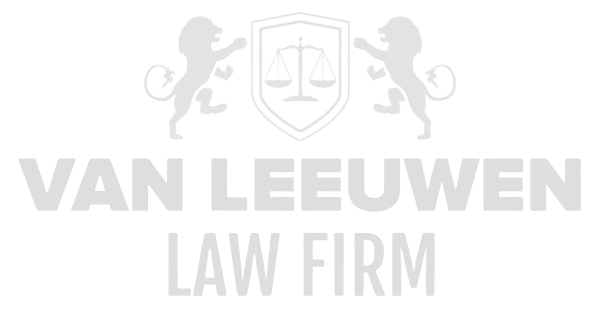The digital economy represents a revolutionary shift in the way economic activities are conducted, fundamentally redefining traditional methods and processes through the application of digital technologies and the internet. This transformation is not limited to the automation of existing activities; it entails a profound restructuring of value creation, distribution, and consumption, with the digital ecosystem forming the core of economic interactions. In this context, technology serves not merely as a tool but as a strategic engine that transcends the boundaries of conventional business models, generating entirely new economic opportunities. The digital landscape encompasses a wide array of activities, including electronic commerce, digital marketing, financial technology, cloud-based infrastructures, and advanced data analytics, each playing a distinct role in enhancing efficiency, competitiveness, and market access.
The rapid pace of technological advancement propels the evolution of the digital economy at an unprecedented speed compared to previous economic transitions. Innovations such as artificial intelligence, blockchain technology, and the Internet of Things lie at the heart of this transformation, with far-reaching implications for corporate strategies, customer interactions, and operational structures. These developments enable enterprises to operate on a global scale and significantly expand their reach, while simultaneously presenting complex challenges in data security, regulatory compliance, and consumer trust. At the same time, digital platforms, cloud computing, and advanced analytics have become essential for understanding and influencing market dynamics, compelling companies to continuously invest in both technology and expertise to remain relevant and competitive. The digital economy is therefore not a static environment but a continuously evolving ecosystem that demands agility, strategic foresight, and innovative thinking.
Digital Platforms
Digital platforms form the backbone of the digital economy, providing the infrastructure necessary to connect users, facilitate transactions, and unlock new markets. These platforms operate at a level that transcends traditional distribution chains, enabling direct interactions between providers and consumers and significantly reducing reliance on intermediaries. Platforms such as social networks, online marketplaces, and specialized digital services create environments in which economic value is no longer measured solely by physical assets but also in terms of network effects, user engagement, and data-driven insights. The strategic significance of these platforms extends far beyond simple transactions; they serve as essential catalysts for innovation, market expansion, and structural changes in how companies position their products and services.
The transformation brought about by digital platforms is evident in the shift from linear business models to platform-based ecosystems where interactions, data, and services are central. Companies leveraging these platforms can benefit from scalability advantages unavailable in traditional markets, while consumers gain access to an unparalleled diversity of products, services, and information. This dynamic allows businesses to analyze customer needs and behaviors directly, enabling strategic decisions that closely align with changing market conditions. At the same time, reliance on digital platforms forces companies to innovate continuously, strengthen digital infrastructures, and adapt services to rapidly evolving global consumer expectations.
The impact of digital platforms extends beyond commercial transactions; they also redefine the social and cultural contexts in which economic activities occur. Through real-time communication, personalized recommendations, and sophisticated analytics tools, platforms collect behavioral data critical for developing new products, marketing strategies, and customer-focused solutions. The refinement of algorithms and the integration of artificial intelligence allow companies to leverage this data effectively, intensifying competitive pressure and shifting traditional power dynamics within markets. In this complex ecosystem, platform strategies increasingly underpin economic growth, innovation, and market leadership, with success contingent on the ability to integrate technological progress with strategic vision and operational excellence.
E-commerce
E-commerce has profoundly altered the way economic transactions take place, emphasizing speed, convenience, and access to a global array of goods and services. Consumers can now compare products, review evaluations, and make purchases without the physical limitations of traditional stores, creating an entirely new dynamic in consumer behavior. This shift has necessitated a reevaluation of marketing strategies, logistics processes, and payment systems, as companies adapt their operations to meet the expectations of a digitally oriented customer base. The growth of e-commerce represents not merely a quantitative expansion of trade but a qualitative transformation that fundamentally changes how value is created, delivered, and experienced.
The strategic implications of e-commerce are extensive and have a direct impact on business models and competitive strategies. Companies must invest in digital infrastructure, advanced analytics tools, and data-driven marketing to remain relevant in a market where consumers continuously demand speed, convenience, and personalized experiences. E-commerce also enables enterprises to access global markets without requiring a physical presence, significantly reducing traditional barriers to international expansion. Additionally, the ability to closely monitor and analyze consumer behavior creates an environment in which product development, pricing strategies, and marketing campaigns can be continuously adjusted based on real-time insights.
The consequences of e-commerce extend across the entire value chain, from production and distribution to customer relations and after-sales services. Advanced logistics solutions, including automated warehouses, real-time tracking, and flexible delivery options, have become essential to meet consumer expectations. Increased interactions through digital channels also require companies to develop effective strategies for customer retention, personalization, and reputation management. The continuous interplay between technology, data, and consumer behavior renders e-commerce a complex and dynamic component of the digital economy, with success dependent on the ability to anticipate changing conditions and base strategic decisions on profound insights.
Digital Payments
Digital payments are an integral component of the infrastructure of the digital economy, extending and in some cases replacing traditional financial systems with electronic transaction methods. The use of digital wallets, mobile payment apps, blockchain technology, and Near Field Communication has dramatically increased the speed, security, and accessibility of transactions. These innovations allow financial interactions to occur without physical presence, bank branches, or cash, contributing to a more inclusive and efficient economy. The role of digital payments extends beyond transactions, serving as a critical tool for collecting data, monitoring consumer behavior, and developing financial products tailored to specific needs.
The strategic advantages of digital payments lie in the combination of efficiency, scalability, and data-driven decision-making. Businesses can process payments more quickly, reduce operational costs, and provide consumers with a seamless, user-friendly experience. At the same time, digital payment systems enable the analysis of spending patterns, which is crucial for developing marketing strategies, product adjustments, and risk management. The integration of these technologies into business processes not only enhances operational capacity but also creates new opportunities for innovation and competitive advantage.
The rise of digital payments also has far-reaching implications for financial inclusion and access to economic activities. By digitizing transactions and lowering barriers, more consumers and businesses can participate in the formal economy, contributing to broader economic growth and stability. At the same time, companies and governments must implement robust security measures and comply with privacy regulations to maintain user trust. In an era where digital interactions are the norm, secure, fast, and reliable payment systems are fundamental to the success of both businesses and the digital economy as a whole.
Big Data and Analytics
Big data and analytics form the core of decision-making and strategic planning within the digital economy. The vast volumes of data continually collected from transactions, social media, sensors, and other digital sources provide unprecedented insights into consumer behavior, operational efficiency, and market trends. Through advanced analytical techniques, including machine learning and artificial intelligence, companies can identify patterns, make predictions, and make strategic decisions that align closely with both current and future market conditions. Leveraging data as a strategic asset transforms traditional approaches to business operations and opens new avenues for innovation, personalization, and competitive advantage.
The impact of big data spans all aspects of business operations, from product development and marketing to customer service and supply chain management. By understanding the needs and preferences of consumers, companies can deliver targeted offerings, create personalized experiences, and strengthen customer relationships. Simultaneously, analyzing operational data allows for the identification of inefficiencies, optimization of processes, and reduction of costs. However, the strategic use of data requires advanced infrastructure, expertise, and a deep understanding of analytical methods to fully realize potential and achieve competitive advantage.
Big data and analytics also pose significant challenges, particularly regarding privacy, ethics, and security. Collecting and processing vast amounts of personal data requires compliance with complex regulations and the implementation of robust security measures. Companies must balance leveraging data for strategic advantage with respecting the rights and expectations of consumers. The successful application of big data and analytics in the digital economy therefore necessitates an integrated approach in which technological innovation, strategic planning, and ethical considerations seamlessly align.
Cloud Computing
Cloud computing has fundamentally transformed the way companies manage their IT infrastructure and has become a cornerstone of the digital economy. Instead of relying on local servers and physical hardware, cloud computing enables organizations to access computing resources such as storage, processing power, and applications via the internet. This shift has far-reaching implications for scalability, flexibility, and cost control. Companies can scale IT services up or down according to demand, increasing operational efficiency while minimizing investments in physical infrastructure. At the same time, cloud computing provides access to advanced technologies that were once only available to large enterprises, allowing small and medium-sized businesses to compete in global markets.
The strategic implications of cloud computing are immense. By centralizing data and applications in the cloud, organizations can innovate faster and develop new services without the limitations of traditional IT environments. This facilitates collaboration across geographical boundaries, enables real-time data analysis, and supports complex business models that depend on continuous digital interactions. Cloud computing also promotes the integration of other technological developments such as artificial intelligence, machine learning, and the Internet of Things, all of which rely on the computing power and flexibility provided by the cloud. Through these synergies, an ecosystem emerges in which technological innovation directly contributes to strategic advantage and operational superiority.
However, cloud computing also introduces challenges, particularly in the areas of security, regulatory compliance, and data protection. Centralizing sensitive information in the cloud requires robust security measures and continuous monitoring to prevent cyberattacks and data breaches. At the same time, companies must comply with local and international regulations regarding privacy and data storage, creating a complex legal landscape. Successfully implementing cloud strategies therefore requires an integrated approach that combines technological innovation with rigorous governance, risk management, and strategic planning to achieve sustainable benefits.
Internet of Things (IoT)
The Internet of Things (IoT) refers to the network of physical devices connected to the internet that can collect, exchange, and analyze data. These devices range from smart home appliances and wearables to industrial machines and vehicles, offering new opportunities for automation, efficiency, and data-driven decision-making. IoT is an integral part of the digital economy, as it generates real-time data streams essential for process optimization, improved customer experience, and innovation. This continuous connectivity creates a dynamic ecosystem where information and interactions are constantly monitored and analyzed, leading to unprecedented operational insights and strategic opportunities.
The impact of IoT on businesses is significant. Organizations can use devices to monitor processes, perform predictive maintenance, and manage supply chains more efficiently. In sectors such as healthcare, transportation, and agriculture, IoT enables advanced applications that deliver both cost savings and quality improvements. Additionally, IoT makes it possible to personalize products and services, providing customers with tailored solutions that closely align with their needs and preferences. The integration of IoT with other digital technologies such as cloud computing, artificial intelligence, and big data further enhances innovation opportunities and creates new business models that were previously unthinkable.
At the same time, IoT also brings considerable challenges. The massive amounts of data generated by devices require advanced analytics tools and robust infrastructure to extract actionable insights. Security and privacy are critical concerns, as the connection of physical devices to the internet introduces new vulnerabilities that can be exploited by cybercriminals. Furthermore, companies must ensure compliance with regulations and standards to maintain consumer trust and minimize legal risks. Effectively leveraging IoT therefore requires an integrated approach that combines technology, governance, and strategic planning.
Impact on Businesses and Consumers
The digital economy has a profound and far-reaching impact on both businesses and consumers, fundamentally reshaping traditional business models and dramatically altering consumer behavior. For businesses, the digital economy opens new markets and growth opportunities through the use of advanced technologies, innovative products, and data-driven insights. Digital tools allow companies to automate processes, manage customer relationships more effectively, and gain strategic advantages in an increasingly competitive global market. At the same time, the relationship between businesses and consumers is undergoing radical change, as direct interactions, real-time feedback, and personalized experiences become central to business operations.
For consumers, the digital economy offers unprecedented benefits in terms of convenience, access to information, and personalized experiences. Online platforms and e-commerce make it possible to compare products and services, consult reviews, and make purchases anytime and anywhere. These changes have not only transformed shopping behavior but have also raised consumer expectations, with speed, ease of use, and reliability of services becoming critical factors in choosing a product or brand. Moreover, digital interactions contribute to a more informed and conscious consumer, who bases purchasing decisions on data, reviews, and direct product and service experiences.
The strategic implications of this transformation are significant for companies seeking to remain competitive in the digital economy. Organizations must invest in technology, talent, and data analytics capabilities to understand consumer behavior, predict market trends, and respond proactively to changing needs. At the same time, they must ensure robust security, privacy protection, and regulatory compliance to maintain customer trust. Success in the digital economy therefore depends on an integrated approach that combines innovation, customer-centricity, and strategic planning, carefully balancing technological progress with ethical considerations.
Challenges and Future Developments
Despite the significant benefits of the digital economy, both businesses and consumers face a range of complex challenges. Security and privacy are prominent concerns, as the amount of collected data grows exponentially and dependence on digital systems increases. Protecting personal information, preventing cyberattacks, and ensuring data integrity are crucial for maintaining trust and preventing reputational damage. At the same time, rapid technological change requires continuous investment in innovation, training, and strategic flexibility so that businesses and individuals can continue to meet the evolving demands of the digital marketplace.
The future of the digital economy will be shaped by the further integration of emerging technologies such as artificial intelligence, blockchain, quantum computing, and advanced network infrastructures like 5G. These developments will once again transform the way data is processed, transactions are carried out, and business processes are managed. At the same time, IoT applications, automated supply chains, and intelligent analytics platforms will contribute to greater efficiency and personalization of services, giving rise to new business models and market structures. Anticipating these trends and effectively implementing technologies will be essential for gaining a competitive edge in an increasingly digital world.
Balancing technological progress with ethical, social, and environmental considerations remains a critical concern in the digital economy. Inclusivity, transparency, sustainability, and responsible data practices are essential for ensuring a digital future that is both economically viable and socially valuable. Organizations that succeed in integrating technological innovation with strategic governance and ethical considerations will be able to achieve sustainable growth while developing a reliable and future-proof digital infrastructure. The digital economy offers enormous opportunities for progress, but success requires a thoughtful, integrated, and forward-looking approach.
Financial and Economic Crime
The digital economy represents a profound transformation in the conduct of economic activities, underpinned by digital technologies, platforms, and interconnected networks. This sector encompasses a vast array of operations, including e-commerce, digital marketing, financial technology, online gaming, cloud computing, and the development of software and applications. The rapid pace of technological advancement, coupled with the increasing reliance on digital infrastructures, has fueled the exponential growth of the digital economy. Businesses and consumers are now more than ever conducting transactions, interactions, and exchanges through digital channels. While this evolution has brought unparalleled efficiency, market access, and innovation, it simultaneously exposes participants to a unique set of risks and threats, particularly those related to financial and economic crime. The global, interconnected nature of the digital economy creates complex scenarios where illicit actors can exploit vulnerabilities, amplifying the potential for fraud, money laundering, data theft, and other economic crimes.
The characteristics of the digital economy—its reliance on real-time data, digital transactions, and the global reach of platforms—create an environment in which traditional control mechanisms often prove insufficient. Criminals are increasingly sophisticated, exploiting both technological and human weaknesses to pursue financial gain. Consequently, businesses, regulators, and policymakers face the dual challenge of fostering innovation and economic growth while implementing effective safeguards to prevent, detect, and mitigate economic and financial crime. Understanding these risks and developing comprehensive, forward-looking strategies is essential for maintaining trust, stability, and resilience in this highly dynamic environment.
1. Fraud and Cyberattacks on Digital Platforms
Fraud and cyberattacks constitute a persistent and escalating threat to digital platforms and businesses operating within the digital economy. The inherently digital nature of transactions and interactions provides cybercriminals with numerous opportunities to exploit vulnerabilities in networks, systems, and user behaviors. These attacks can target sensitive information such as payment details, personal data, and proprietary business information through mechanisms including phishing, malware, ransomware, or sophisticated social engineering techniques.
One illustrative example is ransomware attacks, in which corporate systems are encrypted and held hostage until a ransom is paid. Cybercriminals frequently employ advanced phishing strategies to steal login credentials, enabling unauthorized access to confidential systems and data. The consequences of such attacks are far-reaching, potentially resulting in financial losses, operational disruptions, reputational damage, and legal liabilities. It is therefore imperative for businesses in the digital economy to adopt robust cybersecurity frameworks. These frameworks should include data encryption, multi-factor authentication, real-time network monitoring, and comprehensive incident response planning. Regular penetration testing and vulnerability assessments are essential for identifying weak points and preemptively mitigating risk.
2. Money Laundering via Fintech and Digital Payment Systems
The rapid expansion of fintech and digital payment systems has introduced new vectors for money laundering. Fintech entities—including online payment processors and cryptocurrency platforms—provide criminal actors with mechanisms to integrate illicit funds into the formal financial system, exploiting the speed, cross-border nature, and anonymity of digital transactions.
A particularly salient example is the utilization of cryptocurrencies for laundering illicit proceeds. Criminals may convert illegal funds into cryptocurrencies and subsequently transfer them across borders or convert them back into legitimate assets, leveraging the decentralized and often pseudonymous characteristics of digital currencies. Additional techniques include the use of prepaid cards, digital wallets, and layered transactional structures designed to obscure the origins of funds. It is therefore critical that fintech providers implement rigorous anti-money laundering (AML) measures, including robust know-your-customer (KYC) protocols, real-time transaction monitoring, and systematic reporting of suspicious activities. Advanced machine learning and algorithmic solutions can further assist in detecting patterns indicative of laundering schemes, enabling proactive intervention.
3. Data Theft and Data Misuse
The digital economy is predicated on the collection, storage, and analysis of vast quantities of data. This data—including personal customer information, transactional histories, and corporate trade secrets—represents a significant target for criminal activity. Data theft and misuse present substantial risks, as criminals seek to exploit this information for financial gain or other illicit purposes.
For instance, cyberattacks can result in the theft of customer data, such as credit card numbers, personal addresses, and authentication details, facilitating identity theft or fraudulent transactions. Misuse of data can also occur when organizations exploit sensitive customer information without consent, or when data is sold to third parties without proper privacy safeguards. To mitigate these risks, businesses must enforce stringent data protection measures, including encryption, access control protocols, and routine security audits. Compliance with data protection regulations, such as the General Data Protection Regulation (GDPR), coupled with the implementation of comprehensive privacy policies, is crucial for safeguarding sensitive information and maintaining consumer trust.
4. Digital Identity Fraud and Unauthorized Access
Digital identity fraud and unauthorized access present acute challenges in the digital economy. Criminal actors may create false identities or hijack existing ones to infiltrate digital platforms, financial accounts, and other sensitive systems. These breaches enable fraudulent activities such as opening unauthorized accounts, applying for credit in another individual’s name, or executing transactions without authorization.
Commonly, cybercriminals exploit stolen login credentials to gain access to online accounts and engage in illicit activities. Social engineering tactics—where attackers impersonate legitimate entities to extract personal information—also contribute to identity fraud. Companies must implement robust authentication and authorization mechanisms, including multi-factor authentication, complex password policies, and continuous access monitoring. Furthermore, educating staff and customers about security risks enhances the resilience of digital platforms against identity fraud and unauthorized access.
5. Compliance and Regulation in a Dynamic Digital Environment
The regulatory landscape surrounding financial and economic crime in the digital economy is both complex and constantly evolving. Businesses must adapt continuously to legal developments, including data protection statutes, anti-money laundering regulations, and cybersecurity standards, to ensure compliance and mitigate legal risks.
The dynamic nature of digital markets challenges organizations to maintain current knowledge of regulatory changes and to align operational practices accordingly. Effective compliance requires proactive engagement, including periodic legal and compliance audits, monitoring of emerging requirements, and the development of internal policies aligned with prevailing laws. Legal and compliance expertise is indispensable for navigating intricate regulatory frameworks and ensuring that systems, processes, and personnel adhere to evolving standards. A strategic, integrated approach to compliance is essential to safeguard the integrity, reputation, and sustainability of enterprises operating in the digital economy.
Privacy, Data Protection, and Cybersecurity
The digital economy represents an emerging paradigm in which digital technologies, internet connectivity, and the processing of data lie at the heart of economic activity. This sector encompasses a broad spectrum of operations, including e-commerce, digital marketing, cloud computing, and online services, all of which rely heavily on the collection, storage, and analysis of data. As the digital economy expands at an unprecedented pace, organizations operating within it confront complex and multifaceted challenges related to privacy, data protection, and cybersecurity. The increasing sophistication of cyber threats, the regulatory landscape, and the technological interdependencies of platforms and services create a dynamic environment in which vigilance, strategy, and compliance are indispensable.
The stakes in this arena are particularly high because breaches of privacy or cybersecurity can result not only in financial losses but also in reputational damage, legal consequences, and the erosion of consumer trust. Organizations must therefore adopt a proactive and comprehensive approach that integrates technological safeguards, operational protocols, and compliance with legal frameworks. In doing so, businesses can preserve the integrity of their operations, protect their clients and users, and contribute to the overall resilience of the digital economy.
1. Protection of Personal Data and Privacy
In the digital economy, organizations collect and process vast quantities of personal information, including customer identification details, transaction histories, and behavioral or preference data. This information underpins personalized services and enhances user experiences, making it a strategic asset. However, safeguarding this data from unauthorized access, misuse, or theft remains a fundamental challenge, particularly in an era marked by sophisticated cyberattacks.
A concrete example is the occurrence of data breaches, wherein sensitive information such as identification numbers, contact details, and payment data becomes exposed due to vulnerabilities in systems, software deficiencies, or deliberate attacks like phishing and ransomware. Such breaches can result in severe consequences, including identity theft, fraudulent transactions, and regulatory penalties. Organizations must implement comprehensive security protocols, including robust data encryption, access controls, and continuous monitoring, alongside routine security audits. Adherence to stringent regulatory frameworks, such as the General Data Protection Regulation (GDPR) in Europe or the California Consumer Privacy Act (CCPA) in the United States, ensures legal compliance and enhances consumer trust.
2. Compliance with Privacy Regulations and Standards
Navigating the complex and evolving landscape of privacy regulations presents a formidable challenge for organizations in the digital economy. Laws and standards vary by jurisdiction and industry, encompassing global mandates such as the GDPR, national frameworks like the CCPA, and sector-specific guidelines.
For instance, GDPR mandates compliance with principles such as data minimization, transparency, and explicit consent. Organizations are required to collect only the data strictly necessary for their operational purposes and to clearly inform users about how their information will be processed. Additionally, mechanisms must be established to allow individuals to exercise their rights, including access, correction, and deletion of personal data. Companies must maintain a comprehensive and accessible privacy policy, implement procedures for consent management, and ensure transparent reporting to uphold both regulatory obligations and consumer confidence.
3. Security of Cloud Computing and Data Storage
Cloud computing has become indispensable in the digital economy, offering scalability, flexibility, and efficiency in the storage and processing of data. However, the security of data in cloud environments presents unique challenges, particularly due to the shared responsibility model between service providers and clients.
A salient example is the risk of unauthorized access resulting from misconfigurations or vulnerabilities in cloud infrastructure or software. Such exposures can lead to data breaches or loss of sensitive information. Organizations must deploy rigorous security measures, including end-to-end encryption, strong authentication protocols, and continuous assessment of cloud providers’ security practices. Furthermore, clearly delineated responsibilities between clients and providers are crucial to ensure that both parties understand their obligations and maintain compliance with security standards.
4. Protection Against Cyberattacks and Malware
The digital economy is an attractive target for cybercriminals, who exploit diverse attack vectors, including malware, ransomware, phishing, and distributed denial-of-service (DDoS) attacks. Protecting networks and systems from these threats is vital for maintaining operational continuity and data integrity.
Ransomware attacks provide a stark example, in which attackers encrypt critical systems and demand payment to restore access. These incidents can cause operational disruption, data loss, and extensive business continuity challenges. Organizations must implement layered cybersecurity strategies, encompassing updated antivirus software, firewalls, intrusion detection systems, and frequent data backups. Continuous monitoring and the development of incident response plans are essential for early detection and rapid mitigation of threats, ensuring organizational resilience against evolving cyber risks.
5. Security of Internet of Things (IoT) Devices
The proliferation of the Internet of Things (IoT) has resulted in an exponential increase in connected devices, ranging from smart home appliances to industrial sensors, all of which generate and exchange data. While these devices enhance automation and efficiency, securing them is a complex task due to limited built-in security features and the sheer scale of devices in operation.
A specific challenge arises from vulnerabilities in device firmware or communication protocols, which can be exploited to gain unauthorized access or to orchestrate attacks on broader systems. Organizations must adopt comprehensive security strategies for IoT devices, including regular software updates and patch management, strong authentication and authorization protocols, and network segmentation. Secure configuration and continuous monitoring of devices are equally essential to identify vulnerabilities proactively and mitigate potential threats to operational integrity.
6. Management of Third Parties and Vendor Access
Organizations often rely on third-party vendors for critical services and system access, introducing additional cybersecurity and privacy risks. Ensuring that external partners adhere to the organization’s security standards is a critical challenge in the digital economy.
For example, data breaches may occur due to inadequate security practices by vendors, exposing sensitive organizational or customer information. To mitigate such risks, organizations must conduct rigorous due diligence during vendor selection, establish contractual obligations regarding security and privacy, and routinely audit third-party practices. Secure interfaces, controlled access mechanisms, and real-time monitoring of external interactions are essential for maintaining the integrity and confidentiality of organizational data.
7. Security of Digital Marketing and Analytics Platforms
Digital marketing and analytics platforms are central to the collection, processing, and analysis of data, enabling targeted campaigns and strategic insights. Securing these platforms is crucial to maintaining data integrity and protecting sensitive customer information.
An example is the risk of data breaches due to vulnerabilities in marketing platforms, potentially exposing customer profiles and behavioral information. Organizations must implement robust measures, such as data encryption, strong access controls, and periodic audits. Secure integration with other systems and adherence to best practices in data management further minimize risks and preserve the effectiveness of marketing and analytics operations.
8. Employee Awareness and Training
Human error remains a leading cause of security breaches, making employee awareness and training essential components of any cybersecurity strategy. Organizations must cultivate a culture of security to mitigate risks associated with insider threats and inadvertent lapses.
Providing employees with regular training on phishing recognition, secure handling of sensitive data, and compliance with privacy policies is fundamental. Organizations should implement awareness campaigns, internal communications, and encourage reporting of suspicious activities. Developing a culture of responsibility ensures that personnel actively contribute to maintaining the security, privacy, and integrity of organizational systems, reinforcing the overall cybersecurity posture of the digital economy.















